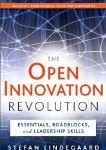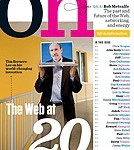Sep12
Innovation across Gaps: J&J, Whirlpool and Manitowoc
Point: Innovators can use various tactics to evaluate (Manitowoc), protect (J&J), bridge (Whirlpool), and ferry (J&J) innovations across inevitable organizational gaps.
Story: Innovation in large organizations often faces obstacles due to the natural divisions within the firm. Gaps can occur between risk-taking vs. risk-avoiding groups, diverse business units, and functional silos. Open innovation adds a fourth type of division: that between the investor/buyer of an innovation and the inventor/seller of an innovation. Presenters at the 2nd Annual Open Innovation Summit discussed these four different types of gaps and some methods for carrying innovation across the gap.
Johnson & Johnson highlighted the first gap, which occurs between groups involved in long-term innovation versus those responsible for short-term operations. On one hand, the near-term viability of a firm depends on minimizing risk and costs while consistently delivering value to the customer. On the other hand, the long-term viability of the firm depends on spending money to finding new, more competitive and more productive ways of delivering value to the customer. Whereas failure might be essential to innovation, failure can be fatal to operations.
To help handle this very natural and necessary gap, J&J created COSAT (Corporate Office of Science and Technology) to provide a sanctuary or sandbox for new innovations (including external ideas). This sanctuary protects the innovation from the rightfully risk-averse operations side of the organization; it also protects operations from the rightfully risk-taking innovation side. In addition, COSAT provides low levels of funding (about $50k to $250k of angel-style capital) to help keep projects alive until the organization is ready for them.
A second kind of gap occurs in large, diversified companies. For example, J&J has more than 250 divisions that make everything from over-the-counter painkillers to in-the-body artificial hips. The diversity of regulations (consumer products, pharmaceuticals, medical devices), markets (consumers, retailers, physicians, surgeons), and technologies (consumer products, drug chemistry, high-tech materials, and electronics) means that innovations in one part of the organization — even innovations that failed — might be useful in a different part of the organization.
To address this second gap, J&J’s COSAT helps ferry ideas from their source (from both inside and outside the company) to potential applications at the different divisions of J&J. This ferrying process includes:
- aggregating good ideas from across the J&J portfolio of companies and outside sources
- validating ideas with key opinion leaders inside J&J
- providing low levels of funding to keep good ideas alive
- brokering ideas to different divisions.
Whirlpool described a third kind of gap, one that’s caused by functional silos. Each functional department (engineering, manufacturing, marketing, HR, IT, legal, etc.) has its own metrics, goals, and performance pressures that drive that department’s tactics. But these finely-tuned local optimizations can cause different departments to operate at cross-purposes to each other. The result is problems such as local protectionist tendencies within silos, barriers to coordination between silos, and money-wasting misalignment in the organization.
Whirlpool’s solution is to bridge the gap between silos through aligned strategy and common processes in combination with communications and training that engage the organization. Whirlpool uses strategy reviews to help the silos see the bigger, shared picture of the organization’s future and the role of innovation in that future. Whirlpool cascades its overarching goals down to local goals so that the silos support rather than hinder the overarching goal. A combination of common processes and flexible teams helps create broad organizational engagement. Communication and web-based training called Whirlpool Foundations (see Communication in Open Innovation post) help everyone in all departments understand the key role of innovation.
Finally, crane and food service company Manitowoc describes a special type of gap that is felt most keenly in open innovation: the expectations gap between the investor/buyer of the innovation and the inventor/seller of an innovation. Whereas inventors often see their precious inventions in terms of the millions in revenues it might reap, the investor or buyer of the innovation sees the potential of millions in costs that the innovation will almost certainly incur. Not only does the situation create a valuation gap, but inventors may feel a parental instinct toward their invention and expect the buyer to not modify the invention. This gap can create ill-will, broken negotiations, or stall an open innovation implementation.
To deal with this gap, Manitowoc evaluates potential open innovations on five dimensions:
- the current level of development of the idea
- the status of intellectual property
- the potential for competitor workarounds of the idea
- the degree of technical competitiveness offered by the innovation
- the expected business impact.
Manitowoc also looks at the technical and business experience of the inventor when deciding whether and how to craft a deal (e.g., patent assignment, acquisition, or joint venture) with the inventor.
Overall, these four gaps reflect the world’s natural diversities in a complex business and technical environment. Different people in different divisions, departments, and roles really are different. Rather than homogenize everyone, these four companies found ways to evaluate (Manitowoc), protect (J&J), bridge (Whirlpool), and ferry (J&J) innovations within a gap-filled context. These gap-handling tactics increase the effectiveness of innovation processes.
Action
- Determine if the innovation is ready to cross the gap (and worth bringing across the gap)
- Use a sanctuary to protect the innovation from hostile forces on the other side of the gap (and to protect the people on the other side of the gap from disruption by the innovation)
- Use communications to bridge the gaps: explain to both sides the respective benefits of bridging the gap (e.g., why the operational side needs the innovation, and why the innovation needs to be operationalized)
- Create a ferrying process or group to help develop, broker, and transition innovations across the gap.












